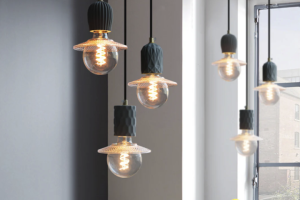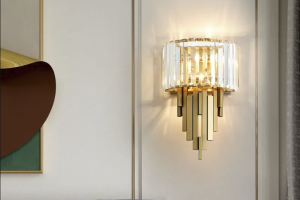Introduction
Japandi is a design trend that combines the simplicity and functionality of Scandinavian design with the elegance and subtle details of Japanese style. Japandi table lamps are a perfect example of this design trend, characterized by clean lines, neutral colors, and natural materials. This article will explore the history, features, and benefits of Japandi table lamps, as well as provide tips for choosing and using them effectively.
History of Japandi Design
Japandi design emerged in the 2010s, as a response to the growing demand for minimalist, sustainable, and timeless design. Both Japanese and Scandinavian cultures have a long tradition of simplicity, functionality, and natural materials, which makes them a perfect match for each other. In Japanese design, the concept of wabi-sabi emphasizes the beauty of imperfection, asymmetry, and simplicity, while in Scandinavian design, the concept of hygge emphasizes the coziness, warmth, and comfort of a space. Japandi design takes these concepts and combines them to create a harmonious and balanced style that appeals to many people today.
Features of Japandi Table Lamps
Japandi table lamps are characterized by several features that set them apart from other styles. First, they often have a wooden base, which is either minimalist and smooth or rustic and textured. The wood is usually light-colored, such as oak, birch, or ash, and has a natural grain that adds warmth and texture to the lamp. Second, they often have a simple and cylindrical shade made of cotton or linen, in neutral colors like beige, gray, or white. The shade is not too large or too small, and covers the bulb without obstructing the light. Third, they often have a metal or ceramic detail that adds a touch of elegance or contrast to the lamp. It could be a gold or brass accent, a matte black base, or a glossy finish.
Benefits of Japandi Table Lamps
Japandi table lamps have several benefits that make them a popular choice for many people. First, they are versatile and adaptable to different styles and spaces. They can fit in a modern, minimalist apartment, a rustic, countryside house, or a bohemian, eclectic studio. Second, they are eco-friendly and sustainable, as they are made of natural materials that are renewable and biodegradable. Third, they are affordable and accessible, as they are produced by many brands and are available in different sizes, shapes, and colors. Fourth, they are functional and practical, as they provide sufficient light for reading, writing, or relaxing, without being too bright or harsh.
Choosing and Using Japandi Table Lamps
Choosing and using Japandi table lamps requires some considerations and tips. First, you should choose a lamp that matches the style and colors of your room, as well as the purpose and size of the lamp. If you have a dark or colorful room, choose a lamp that contrasts it, such as a light-colored wood base and a beige or white shade. If you have a small or narrow space, choose a lamp that is not too big or bulky, such as a slim and tall base and a cylindrical shade. Second, you should place the lamp in a strategic and convenient location, such as a bedside table, a desk, or a reading nook. Make sure that the lamp is not too far or too close to the furniture, and that it does not block the view or the movement. Third, you should use the lamp wisely and efficiently, by adjusting the height, the angle, and the intensity of the light, and by avoiding leaving it on for too long or too often.





More Posts
Creative Studio Essential: Industrial Gear Pendant
Vintage Industrial Bulb Chandelier for Loft Spaces
Enhance Your Space with a Luxe Crystal Wall Lamp